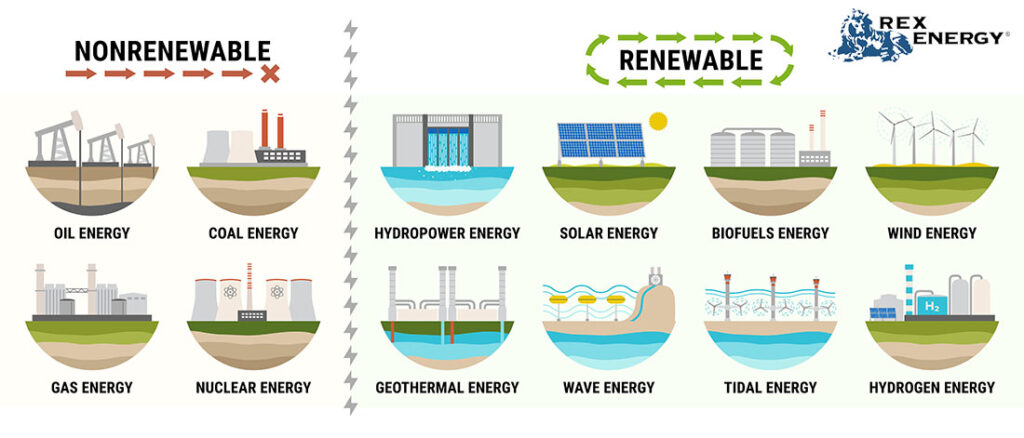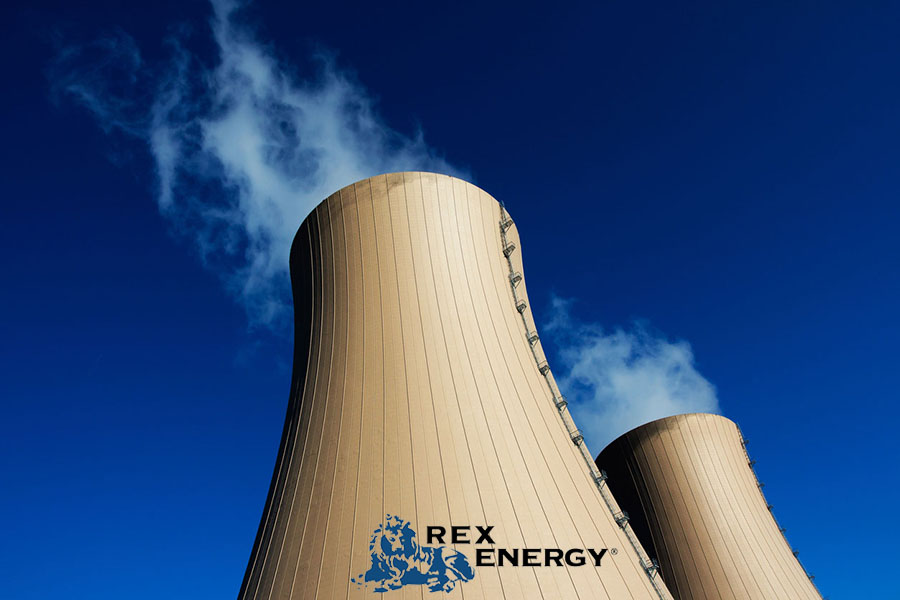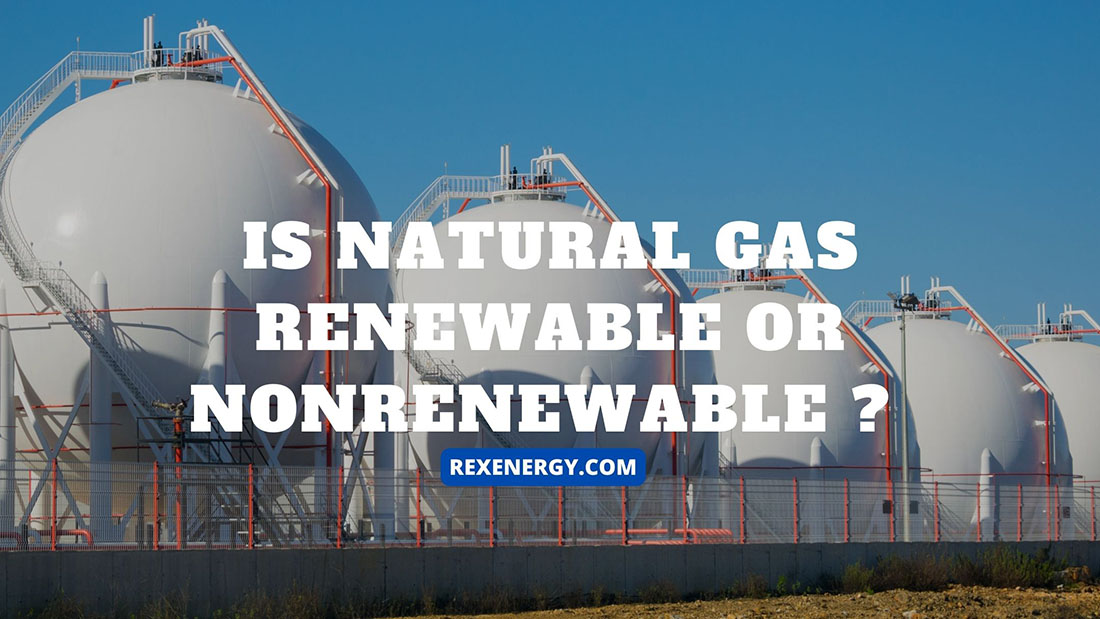Natural gas has been an irreplaceable part of the energy industry for decades, commonly used to provide intense heat, power vehicles, and generate electricity. However, as climate changes and resource depletion have become more pressing, many people are concerned about whether natural gas is renewable or nonrenewable.
Is Natural Gas Renewable or Nonrenewable?
Natural gas is usually considered a nonrenewable source. It derives from underground fossil fuel (primarily methane) and takes several millennia to formulate while involving numerous geological and natural processes, such as the rotting of microorganisms and ancient plants. As a result, replacing or regenerating natural gas is not easy at all.

Why is Natural Gas Nonrenewable?
Natural gas is made of abiogenic and thermogenic methane, both of which are not renewable sources of energy.
Thermogenic methane: Animals and plants were reduced to putrefied remains over millennia, then pressurized by mud and sediments over high temperatures to create this methane. It is located about 1-2 miles underneath the Earth’s surface.
Abiogenic methane: Carbon molecules and hydrogen-rich gas rise above the surface over the years, combining into a proportionate molecular mixture (4 hydrogen atoms per 1 carbon atom) to produce abiogenic methane. This methane then sinks into the large underground deposits.
Is Natural Gas A Clean Source of Energy?
Natural gas is considered much cleaner than some other fossil fuel options. It does not create as much environmental impact as oil or coal. When burned, natural gas produces the same amount of energy as carbon dioxide while releasing fewer toxic pollutants.
Not to mention, it can also work very well with some renewable energy sources and serves as their backup during emergencies. Therefore, despite being a nonrenewable energy source, natural gas is regarded as a reliable “bridge” fuel during transitions to renewable fuel sources.
A Renewable Gas Type To Replace Natural Gas
Gas comprising biogenic methane is still considered sustainable, as methanogens naturally consume organic material, such as cow intestines and landfills.
That also explains why the Department of Agriculture in the USA has organized 100+ projects in the past decades to gather biogenic methane from cow intestines/manure.
On the other hand, some studies have pointed out that several biomethane sources result in climate change. Plus, it is still a limited resource, predicted by experts to run out 40-50 years later eventually.
How Is It Produced?
Stage 1. Collect the biomass
Natural gas producers collect organic waste materials from multiple biomass sources, like food waste, wastewater solids, crop residues, or animal manure, to guarantee a steady feedstock supply for the next stages.
Stage 2. Stabilize and prepare the biomass
After the collection, biomass undergoes a preparation/stabilization phase adjusted according to the source materials. For instance:
- Animal manure/animal material is broken down and digested in tanks or lagoons for further optimization.
- Crop residues and food waste are shredded and divided to boost surface areas. Sometimes, manufacturers mix them with other organic materials or water to create a better breeding ground for anaerobic microorganisms.
- Wastewater solids are anaerobically digested to generate biogas, which is then separated to remove impurities like moisture, hydrogen sulfide, carbon dioxide, etc.
Step 3. Generate methane from the biomass
For biomass like animal manure, food waste, and wastewater, the organic matter is broken down in a non-oxygen environment to generate CH4/methane.
Regarding lignocellulosic materials (like energy crops, woody biomass, or crop residues), the process involves co-digestion, dry fermentation, and thermochemical conversions to transform the biomass into CH4 and CO2 through chemical reactions.
Step 4. Condition the gas
Manufacturers purify and convert methane into a higher-purity form (referred to as biomethane) to ensure the gas is usable for real-life applications.
How to Use Natural Gas In An Environmentally Friendly Way?

Use Less to Waste Less: The UK government is switching outdated iron pipelines with modern plastic pipes to reduce leaks and CO2e GHG emissions when transporting gas (according to Gov.uk). Condensing boilers also use 8% less fuel than their predecessors.
Blend Hydrogen Into Natural Gas: Hydrogen is zero-emission and only generates water vapor during combustion. As a result, blending it with biomethane or other natural gas can minimize the grid’s carbon footprint dramatically.
Convert Your Network Into A Hydrogen-Based System: Some parts of your gas network can use only pure hydrogen to reduce the carbon footprint. We suggest replacing some of your home appliances or converting the methane into a lower-carbon option.
Combine Carbon Capture and Bio-Hydrogen: Though evidence of its efficiency is still insufficient, some scientists report that mixing carbon capture with bio-hydrogen (produced from the gasified biomass) can help cut down on atmospheric CO2.
Switch from Abiogenetic/Thermogenic Methane to Biogenic: As discussed, biomethane is the only renewable natural gas offering relatively the same benefits. This is clearly the best choice if you want to keep using natural gas for extended periods without contributing to the greenhouse effect.
Other Renewable Resources
Below are some common alternatives to natural gas:
- Solar energy: Solar systems store and capture the sun’s heat, which is later used for heating homes and further industrial processes.
- Wind energy: Wind is renewable, and its turbines can produce electricity to generate power.
- Nuclear energy: This low-carbon source of energy greatly contributes to electricity generation. However, problems regarding its waste disposal discourage many people.
- Ethanol: Ethanol is made of renewable feedstocks (sugarcane, corn, etc.) and is usually blended with gas to minimize greenhouse gas emissions in vehicles, especially flex-fuel cars.

Conclusion
Our article has explained why natural gas is a nonrenewable resource, with biomethane as the only exception. Other alternatives to natural gas, like solar power and wind power, are also worth a try, and you can consider our extra tips to use natural gas more wisely during heating and cooking.








